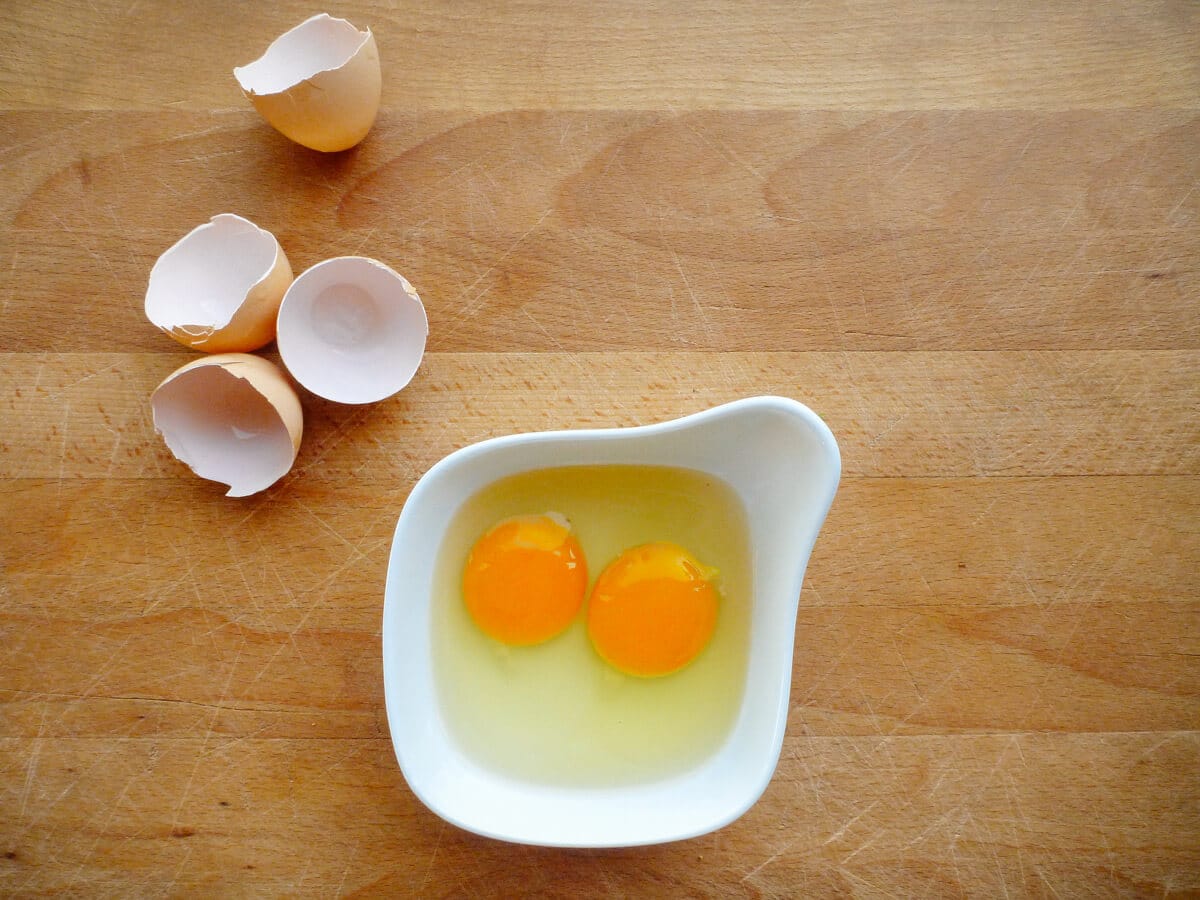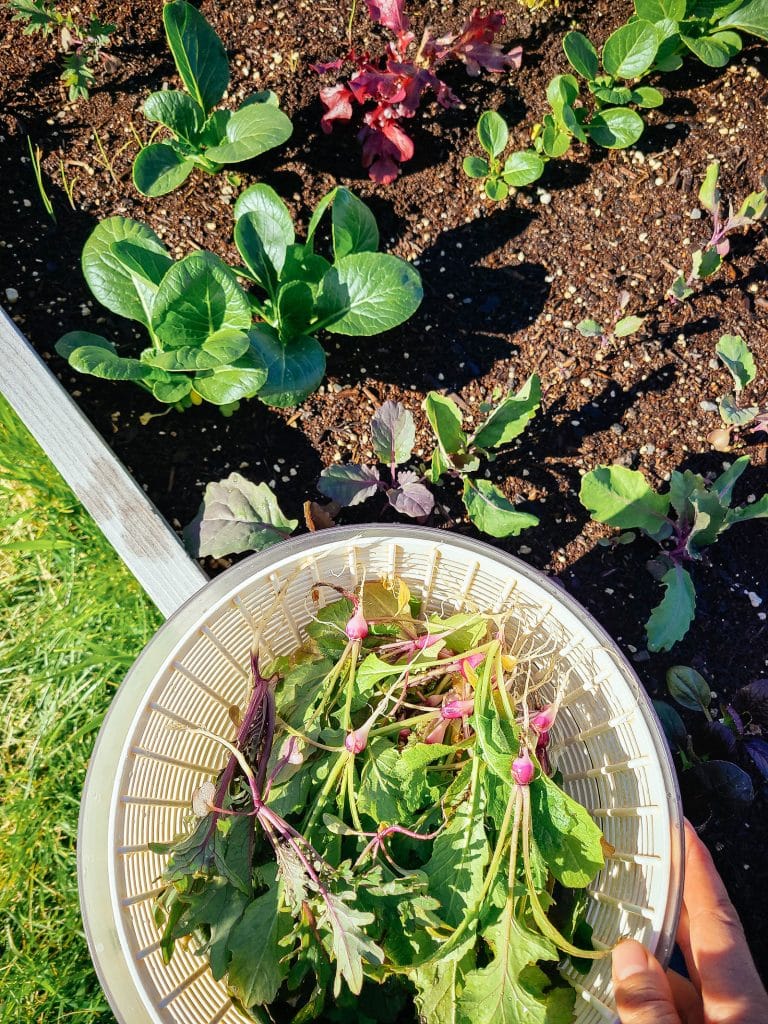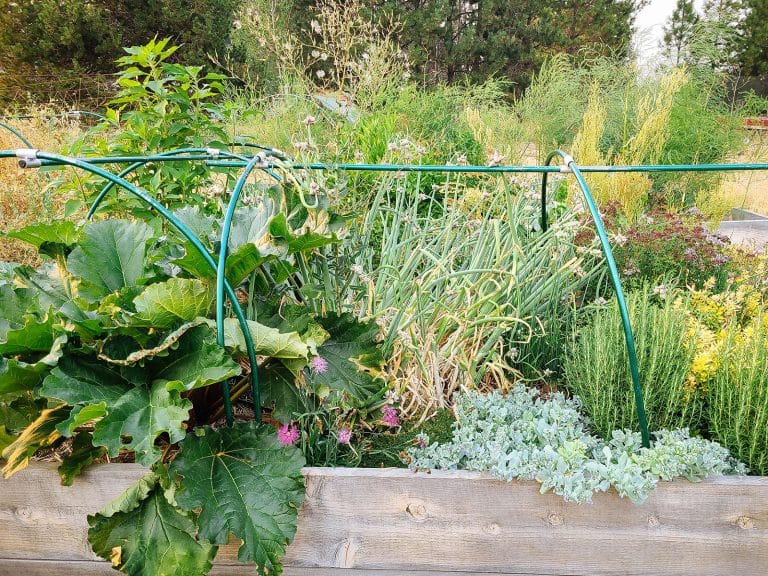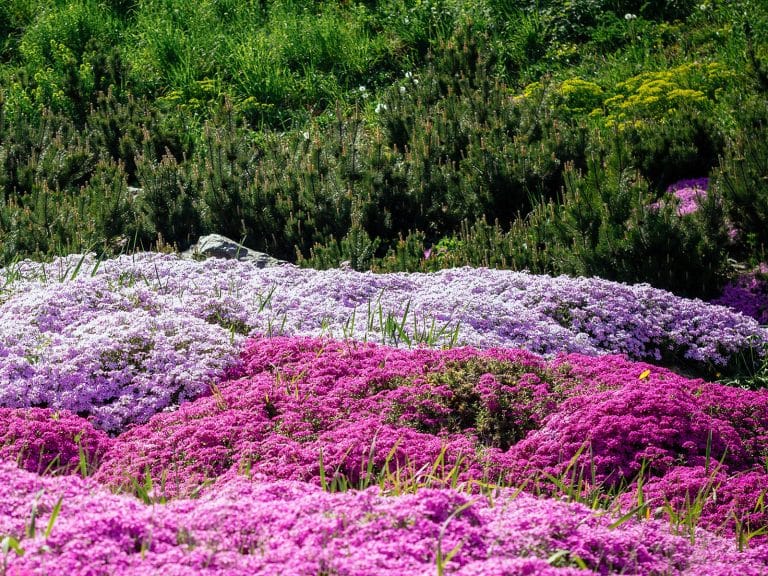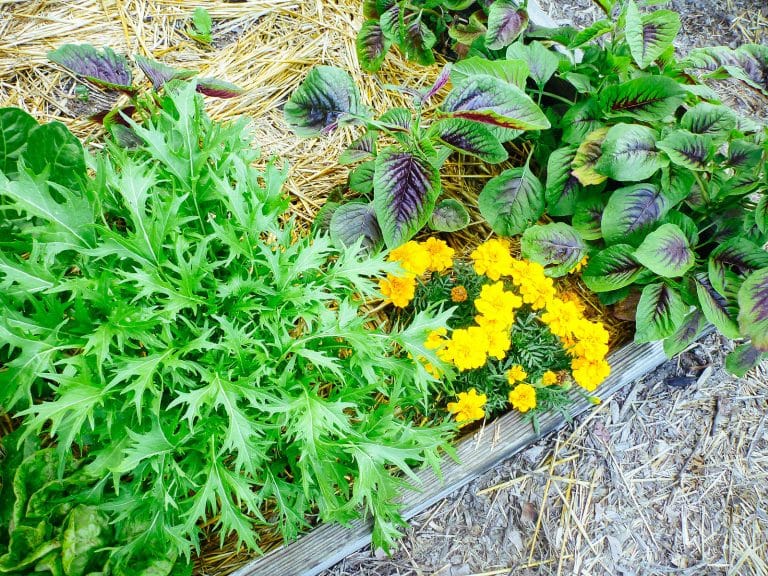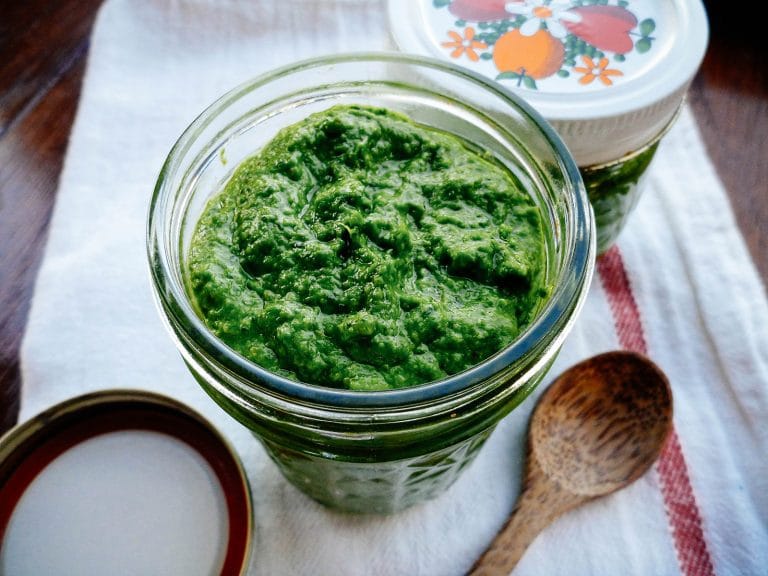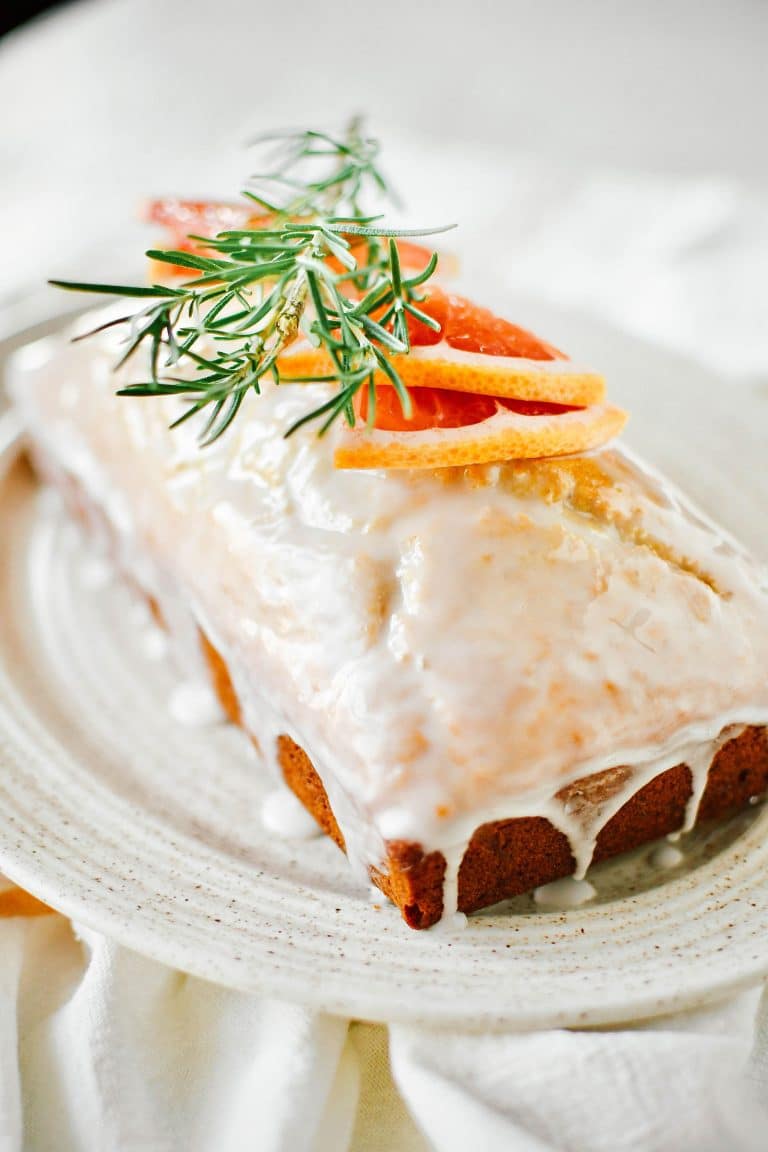If you asked most people what color egg yolks are, they would likely answer yellow.
Yolks have always been associated with the color yellow, which is unfortunate because backyard chicken keepers know better.
Backyard chicken keepers know that yolks can—and should—be a bright, bold orange, and those bright, bold orange yolks are a sign of happy, healthy hens.
In an unscientific home experiment, I compared my pasture-foraging, insect-pecking, soil-scratching, whole grain-feeding chickens’ yolks to the yolks of both their “free-ranging” and factory-farmed counterparts.
The results were clearly visible: Yolks from my homegrown eggs were not only darker, but also fuller and thicker. Even the eggshells were denser and harder to crack.
But what’s the big deal about orange yolks?
Turns out that besides being a coveted color, orange yolks can be an indication of a well balanced and highly nutritious diet.
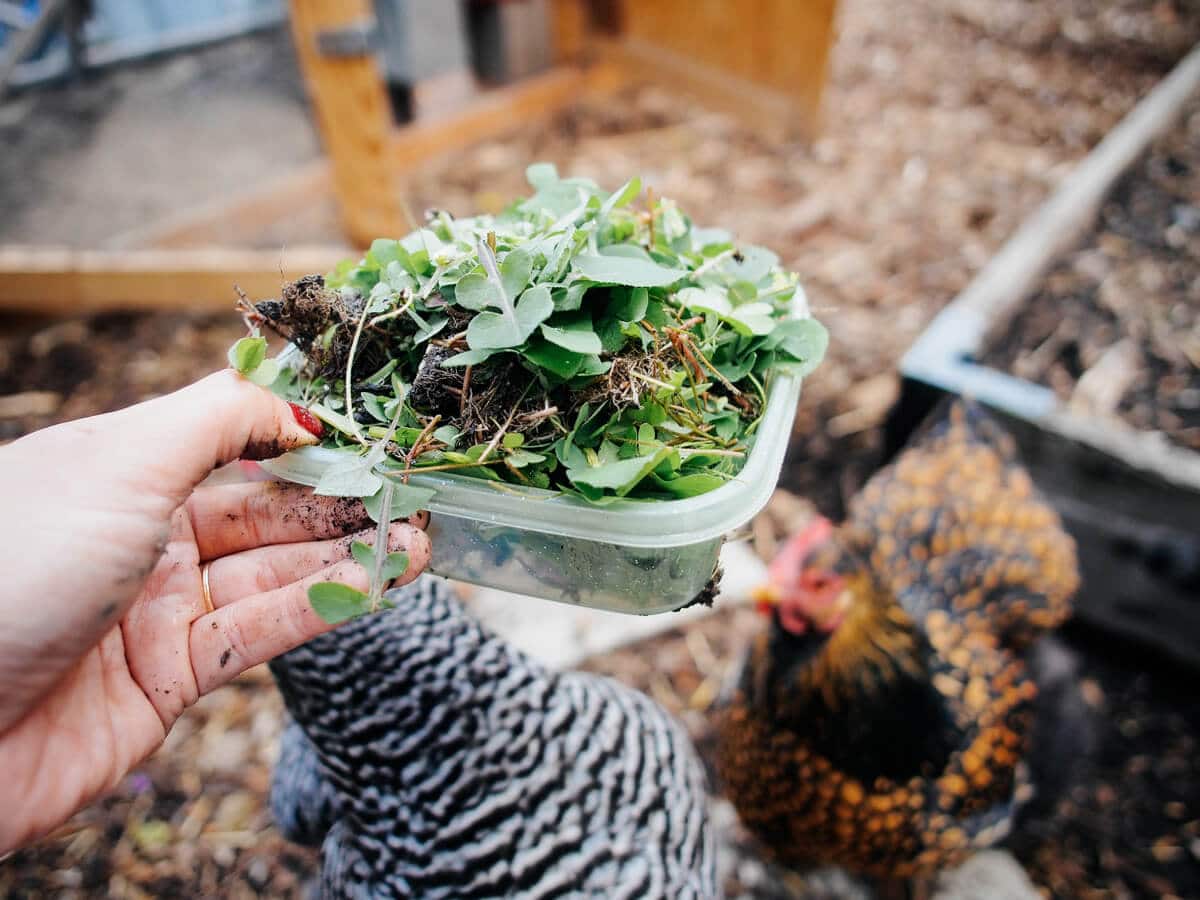
What makes egg yolks orange?
A few things factor into the making of an orange yolk: xanthophylls, omega-3 fatty acids, and meats.
Xanthophylls
The chemicals responsible for yolk coloring were first documented in 1915 in the Journal of Biological Chemistry.
Dr. Leroy Palmer wrote that “The consumer demands highly colored yolks in ‘fancy’ eggs throughout the year, and the eggs with pale colored yolks, so frequently found on the market during the winter months, are the object of much complaint, particularly in cities.”
He determined that orange yolks were produced by a class of carotenoids called xanthophylls, and over 100 years later, this conclusion is still widely accepted.
Carotenoids are natural plant pigments found in many fruits and vegetables. It’s often thought that beta-carotene, one of the more well-known carotenoids, is responsible for giving yolks the orange pigment that people associate with carrots.
But in actuality, beta-carotene benefits yolks nutritionally, rather than pigment-wise.
Read More: Propaganda Told Us Carrots Can Improve Eyesight—Here’s the Truth
The carotenoids that cause deeper yolk coloring are xanthophylls, which are more readily absorbed in the yolks. (Lutein is one such xanthophyll, and a lot of lutein means a lot more orange.)
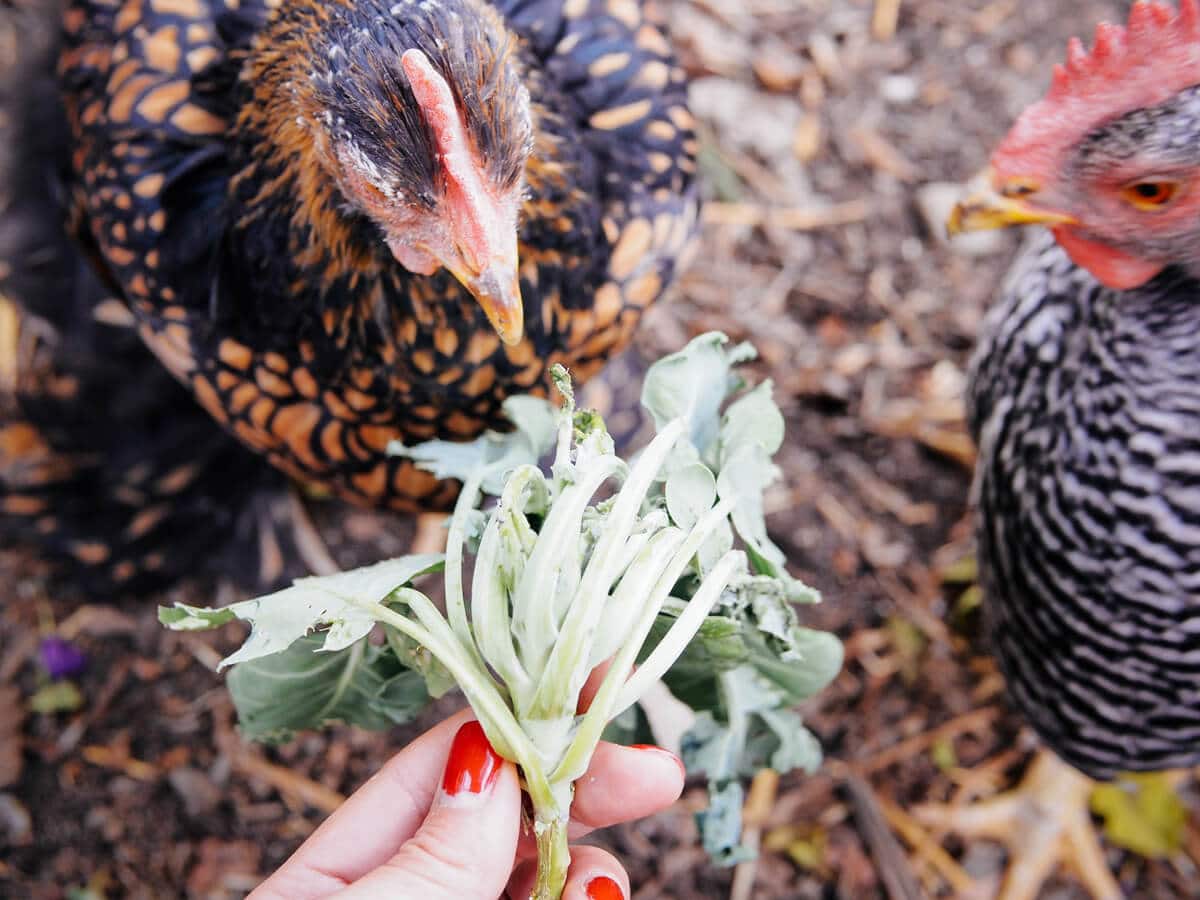
Xanthophylls are found in dark leafy greens like spinach, kale, and collards, as well as in zucchini, broccoli, and brussels sprouts.
(I know it seems weird that a carotenoid that turns egg yolks orange is found in green vegetables, but stay with me here.)
Related: Why Purple Beans Turn Green After Cooking (A Kitchen Magic Trick!)
Omega-3 fatty acids
Omega-3 fatty acids are highly concentrated in oily fish (especially cold-water fish like salmon, tuna, and mackerel), shellfish, algae, tofu, and high-fat plant foods (like brusssels sprouts, navy beans, and avocados).
They’re also found in flax seeds and sea kelp, which are both important components of my homemade whole-grain chicken feed.
Meat
Did you know that chickens are not meant to be vegetarian, no matter what your premium carton of organic/grain-fed/cage-free eggs tells you?
Chickens are omnivores by nature and their healthiest diets include meats, such as mealworms, beetles, grasshoppers, grubs, and whatever creepy-crawly they can pull out of the ground. I’ve even heard of chickens attacking and feeding on small rodents and snakes!
And yes, you can even feed your chickens the leftover cooked chicken from last night’s dinner (no matter how wrong that may sound). It’s good for them, and won’t turn them cannibalistic.
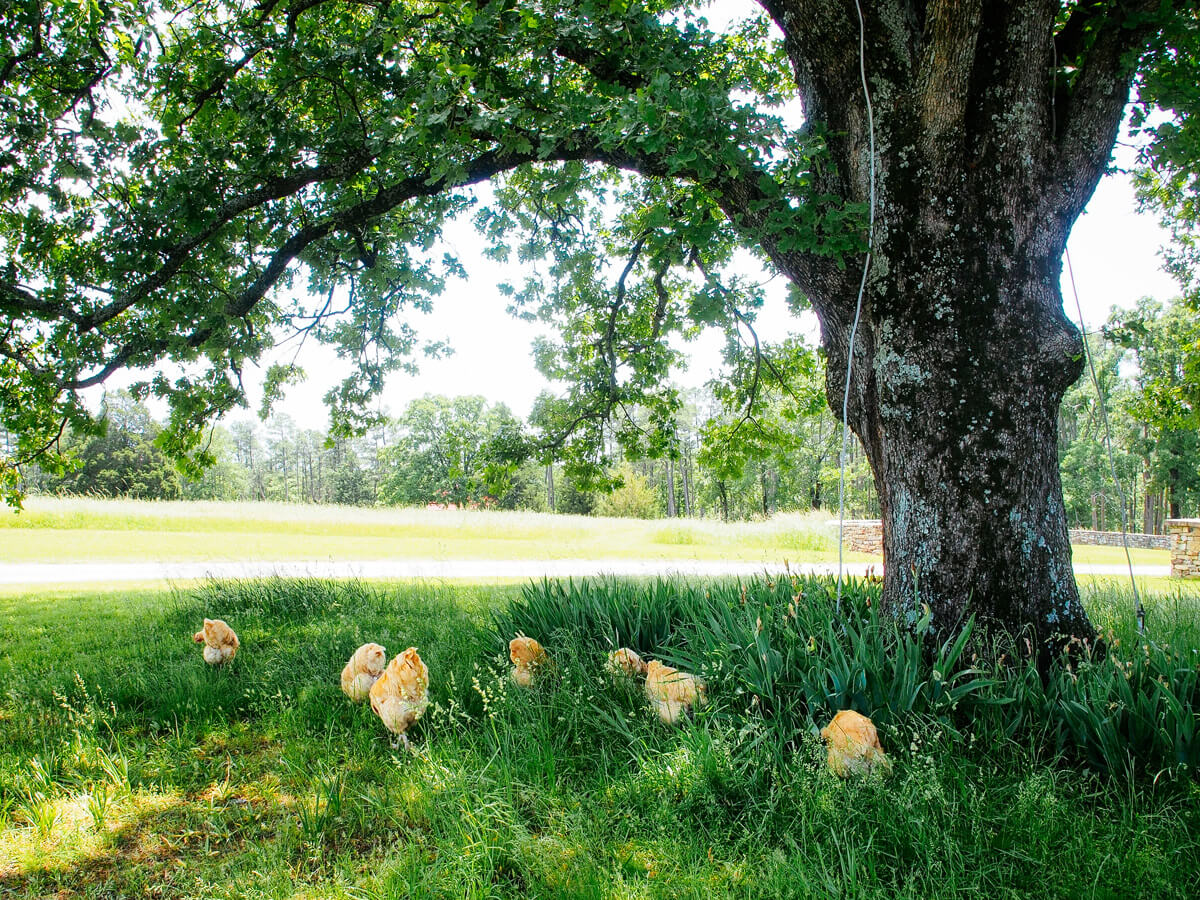
Are dark orange yolks healthier for you?
Yes and no.
You see, color alone has very little to do with the nutritional content of an egg yolk. Yolk color depends almost entirely on the pigments found in the food that chickens eat.
When hens eat a diet that’s heavy in yellow corn, they lay eggs with medium-yellow yolks. A diet of wheat or barley results in eggs with lighter-colored yolks, and a colorless diet (such as white corn) produces nearly white yolks.
In fact, it’s so easy to “dye” the color of a yolk that a Santa Fe, New Mexico farmer, Matt Romero, is known for his legendary flame-colored egg yolks, which he gets simply by feeding his hens the leftover red chile peppers from his farm.
Other farmers “hack” their way to darker yolks by feeding their flocks marigold petals (which produces deep yellow yolks) or even using synthetic chemicals like Rovimix Carophyll Yellow, Canthaxanthin, Xanthophyll B, and Lucantin Red to achieve the dark yolks they think their consumers prefer.
This is why you should be leery of cheap eggs from the supermarket whose yolks come out orange.
On the flip side, there’s cause for concern if store-bought “free range” or “pastured” eggs have very pale yolks. It could mean the egg producer is only giving the hens minimal access to the outdoors, like a single door out to a patch of grass.
Foods That Naturally Impact Egg Yolk Color
| Yolk Color | Ingredients |
|---|---|
| Nearly colorless | White cornmeal |
| Light yellow | Wheat, barley |
| Medium yellow | Yellow cornmeal, alfalfa meal |
| Dark yellow | Marigolds, leafy greens, alfalfa |
| Orange to red | Pumpkins, tomatoes, red peppers |
But, there’s a big but to all this…
Chickens whose diets are rich in leafy greens, flowers, seeds, weeds, and meat lay eggs with naturally darker yolks. The xanthophylls, omega-3 fatty acids, vitamins, and minerals in these food sources are then passed on to their eggs and concentrated in their yolks.
Research has shown that of all the nutrition found in eggs, most of it is found in egg yolks, including fat-soluble vitamins like D, E, K, and A (none of which you get from egg whites), essential fatty acids like DHA and ALA, and other nutrients like calcium, iron, magnesium, zinc, choline, and B vitamins.
According to Mother Earth News, which conducted its own egg analysis, and a more recent Pennsylvania State University study, pastured eggs (where hens are given free range with ample access to greens and bugs) contain higher levels of vitamins A, D, and E, more beta-carotene, and more omega-3s than eggs from caged chickens fed primarily grain.
All this means is that a pastured egg (ideally from your own yard) is healthier for you. And that’s one of the reasons we raise chickens, right?
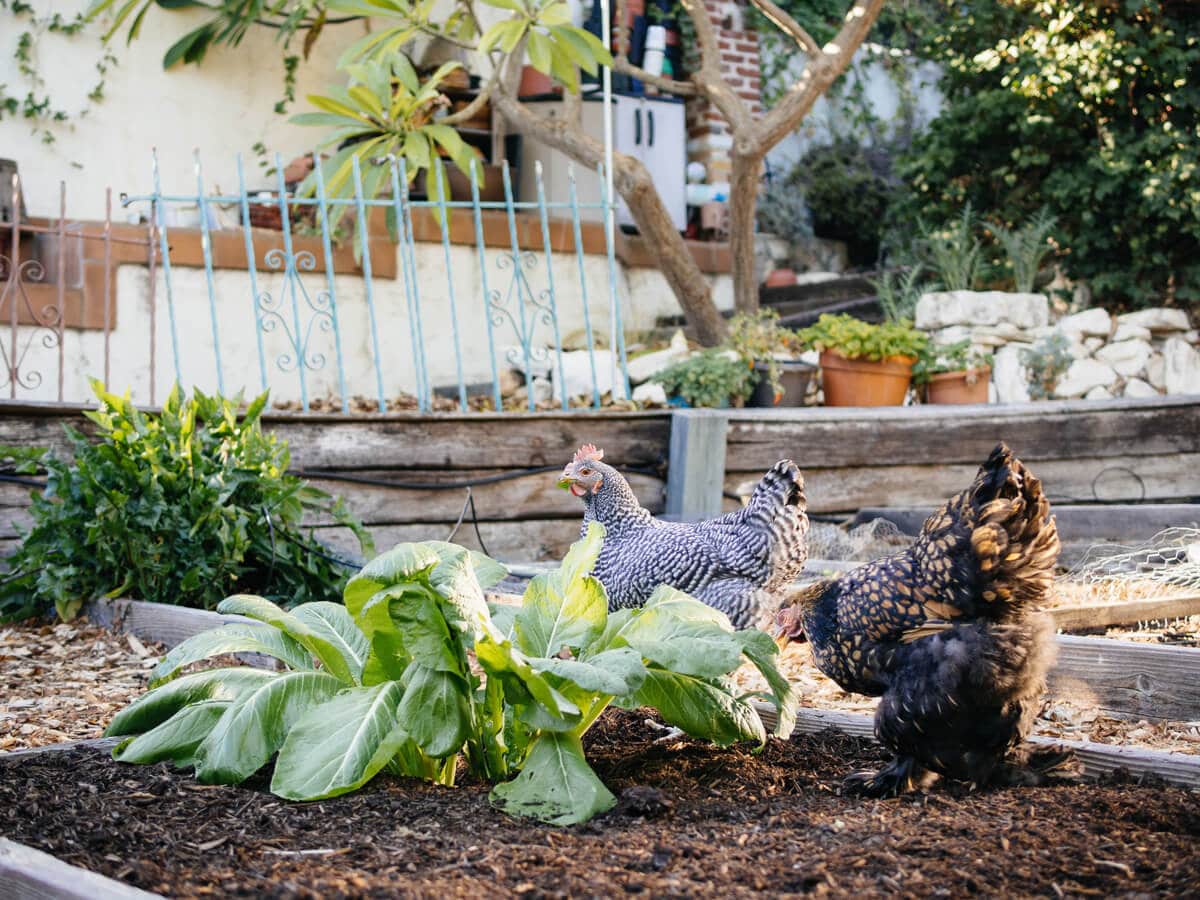
How to get dark orange yolks from your chickens
1. Let your chickens free-range.
Let your ladies roam a pasture (or a garden—especially if you’re digging over soil—or even just a new patch of dirt in their chicken tractor) for an orange-boosting bug buffet. They like to scratch through leaf piles and layers of mulch where protein-rich grubs and tasty earwigs often hide.
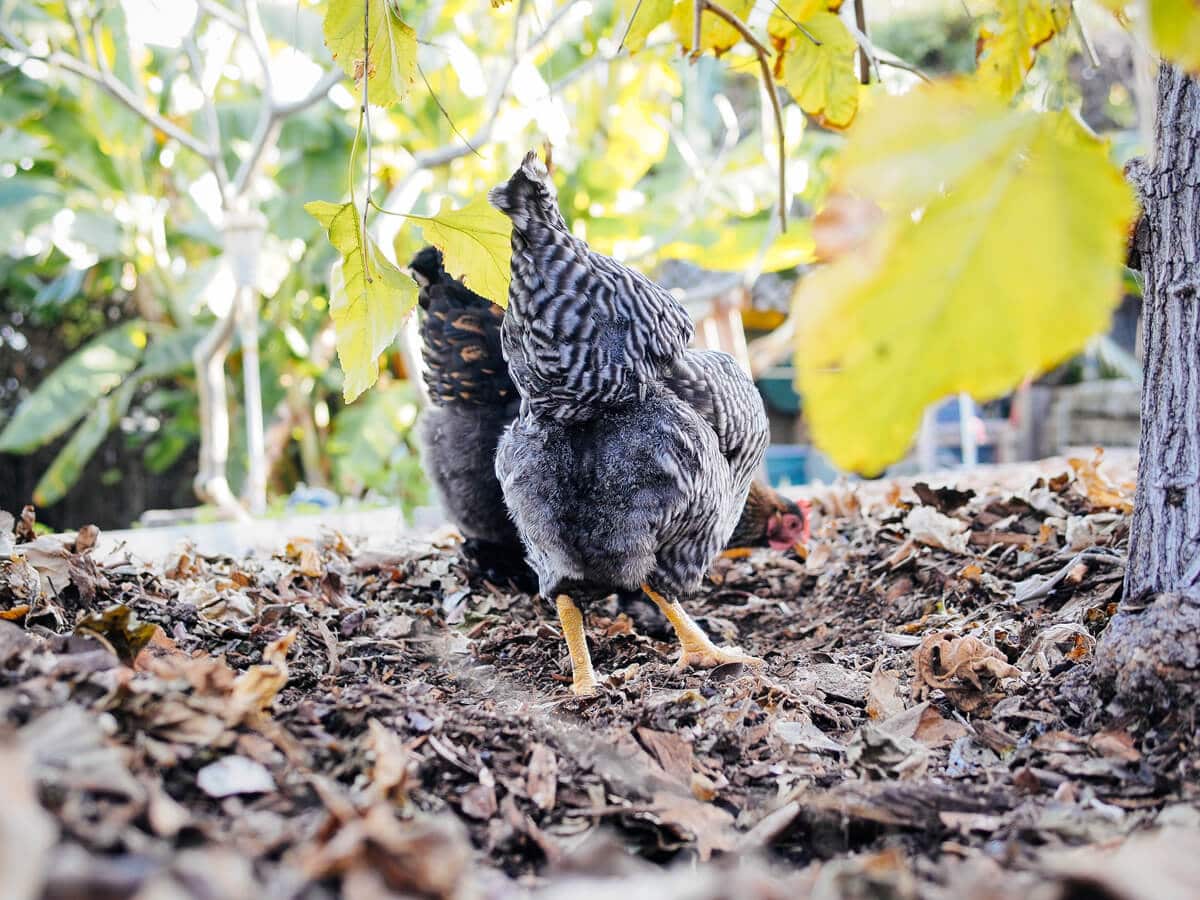
If it’s recently rained, let your chickens out so they can hunt for worms, sowbugs, slugs, centipedes, and other bugs that emerge when things get more damp.
Pastures (or backyards) full of rich grasses, ground covers, and cover crops are a wonderland for your flock, giving them plenty of opportunity for forage and exercise.
2. Feed your chickens lots of leafy greens.
Give your chickens plenty of fresh greens to increase the lutein in their yolks.
The darker the green the better, so I often fix them a feast of edible amaranth (one of my favorite summer greens), kale, mustard greens, broccoli leaves, or whatever I happen to have growing in my garden.

If it’s the middle of winter and your garden greens are lacking, you can give them alfalfa for a nutritional boost.
3. Let the chickens weed the garden for you.
Rather than pulling all those (vitamin rich!) weeds out of your garden, let your chickens do the dirty work! They love to forage for dandelions, mallow, clover, oxalis, chickweed, purslane, and other plants that sometimes grow where they shouldn’t.

In fact, these types of weeds can be cultivated in a landscape especially for your flock, as they’re low-maintenance and make a lovely, natural, and “wild” lawn that benefits other wildlife as well.
Learn more: Best Edible Ground Covers for Vegetable Gardens
4. Enlist your chickens in yard clean-up.
Chickens are very handy helpers at the end of the season when most of your plants have bolted and become aphid-ridden.
Let the chickens clean up those plants before you toss them into the compost. It’s a win for everybody! (Except the bugs, that is…)

Not only will they take care of the pests on your spent plants, they’ll eat whatever’s left on the stems, including flowers and seeds.
5. Let your chickens turn the compost pile.
If you have an open compost pile, chickens do good work of turning over yard debris and kitchen scraps as they scratch and peck for grubs and worms. (Black soldier fly larvae, which are commonly found in decaying organic matter, have even more protein than mealworms and are naturally high in calcium.)
You can start a compost pile in a corner of the chicken run, or build a compost bin inside the run that’s open on one side (and can be covered as needed).
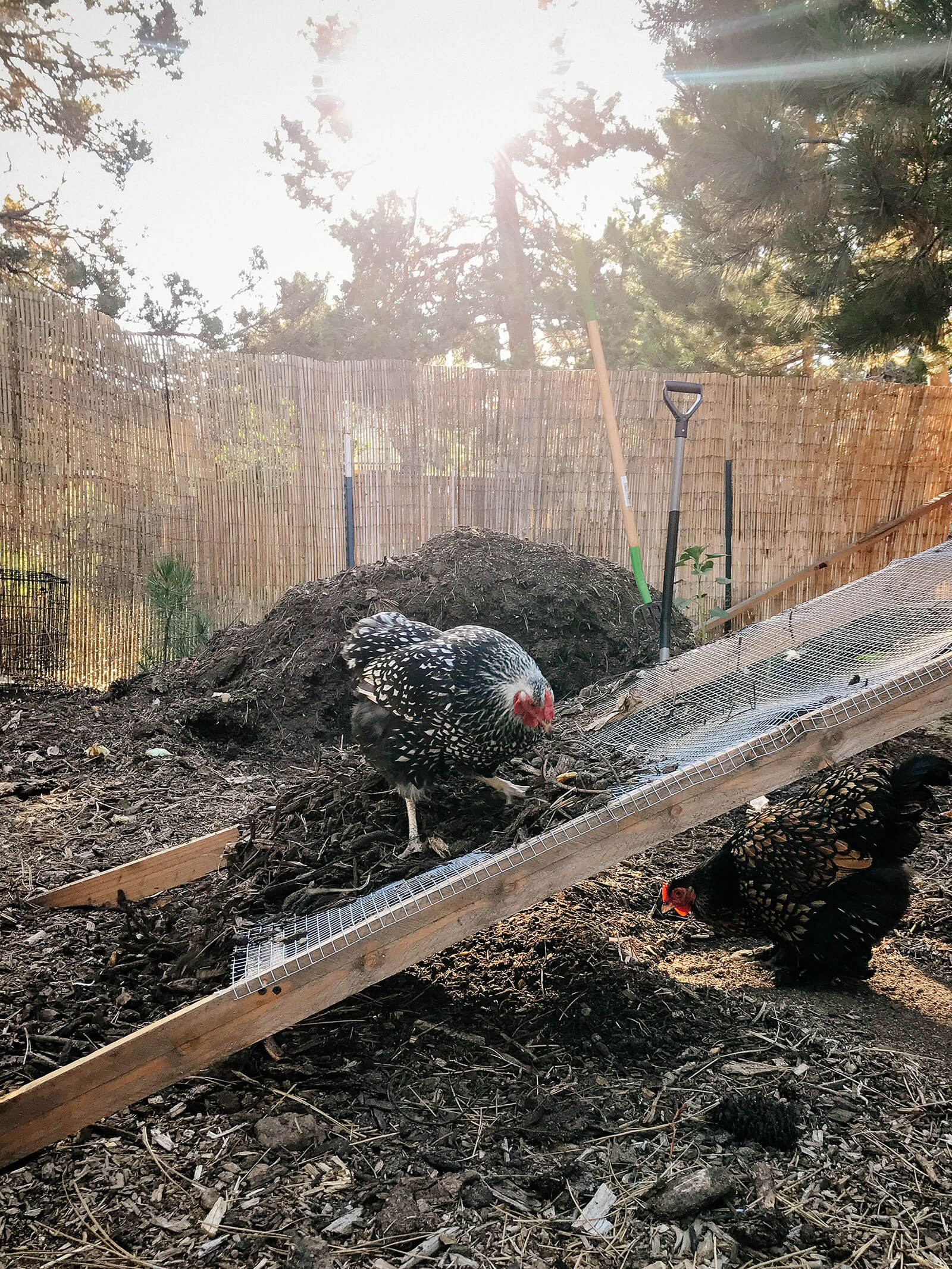
The chickens will eat what they want, shred up your scraps for quicker composting, and keep themselves busy and entertained on days they can’t free-range (which means less hen pecking among the flock).
After a few weeks, you’ll be so used to seeing orange yolks (the way most of us have been conditioned to see yellow yolks) that you might even think they haven’t changed in color.
Buy some eggs from the store and crack them into a bowl with your homegrown eggs—you’ll be stunned at the difference!
This post updated from an article that originally appeared on March 7, 2013.
View the Web Story on how to make chickens’ egg yolks darker.


